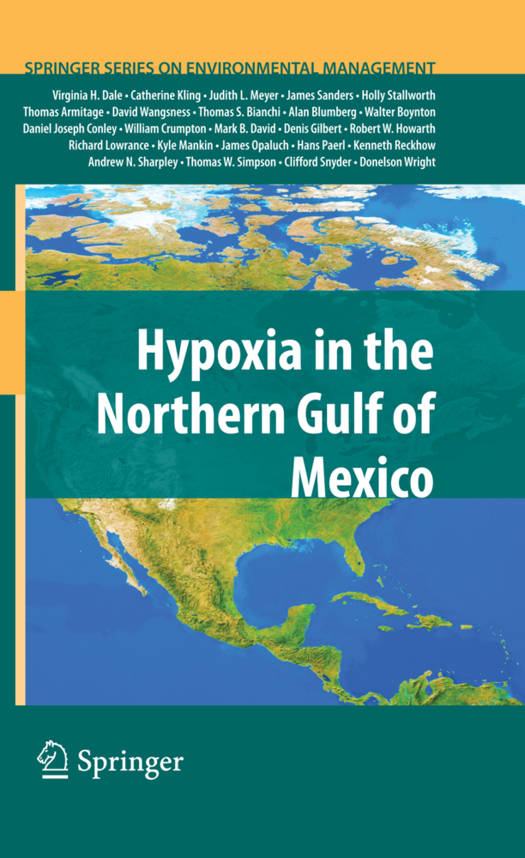
- Retrait gratuit dans votre magasin Club
- 7.000.000 titres dans notre catalogue
- Payer en toute sécurité
- Toujours un magasin près de chez vous
- Retrait gratuit dans votre magasin Club
- 7.000.000 titres dans notre catalogue
- Payer en toute sécurité
- Toujours un magasin près de chez vous
Hypoxia in the Northern Gulf of Mexico
Virginia H Dale, Catherine L Kling, Judith L Meyer, James Sanders, Holly Stallworth, Thomas Armitage, David Wangsness, Thomas Bianchi, Alan Blumberg, Walter Boynton, Daniel J Conley, William Crumpton, Mark David, Denis Gilbert, Robert W Howarth, Richard Lowrance, Kyle Mankin, James Opaluch, Hans Paerl, Kenneth Reckhow, Andrew N Sharpley, Thomas W Simpson, Clifford S Snyder, Donelson Wright
181,95 €
+ 363 points
Format
Description
Since 1985, scientists have been documenting a hypoxic zone in the Gulf of Mexico each year. The hypoxic zone, an area of low dissolved oxygen that cannot s- port marine life, generally manifests itself in the spring. Since marine species either die or ee the hypoxic zone, the spread of hypoxia reduces the available habitat for marine species, which are important for the ecosystem as well as commercial and recreational shing in the Gulf. Since 2001, the hypoxic zone has averaged 2 1 16,500 km during its peak summer months, an area slightly larger than the state 2 2 of Connecticut, and ranged from a low of 8,500 km to a high of 22,000 km . To address the hypoxia problem, the Mississippi River/Gulf of Mexico Watershed Nutrient Task Force (or Task Force) was formed to bring together represen- tives from federal agencies, states, and tribes to consider options for responding to hypoxia. The Task Force asked the White House Of ce of Science and Technology Policy to conduct a scienti c assessment of the causes and consequences of Gulf hypoxia through its Committee on Environment and Natural Resources (CENR).
Spécifications
Parties prenantes
- Auteur(s) :
Virginia H DaleCatherine L KlingJudith L MeyerJames SandersHolly StallworthThomas ArmitageDavid WangsnessThomas BianchiAlan BlumbergWalter BoyntonDaniel J ConleyWilliam CrumptonMark DavidDenis GilbertRobert W HowarthRichard LowranceKyle MankinJames OpaluchHans PaerlKenneth ReckhowAndrew N SharpleyThomas W SimpsonClifford S SnyderDonelson Wright
- Editeur:
Contenu
- Nombre de pages :
- 284
- Langue:
- Anglais
- Collection :
Caractéristiques
- EAN:
- 9781461425687
- Date de parution :
- 04-05-12
- Format:
- Livre broché
- Format numérique:
- Trade paperback (VS)
- Dimensions :
- 156 mm x 234 mm
- Poids :
- 471 g







